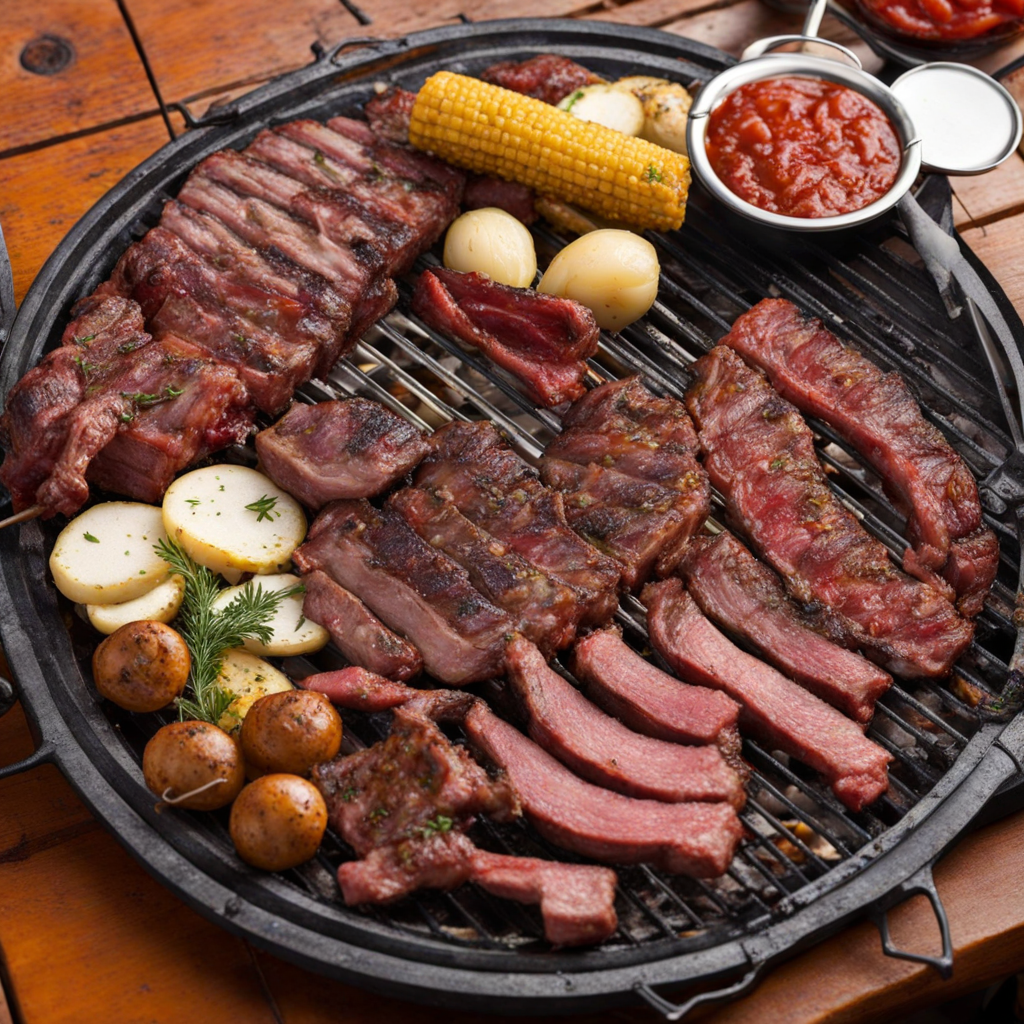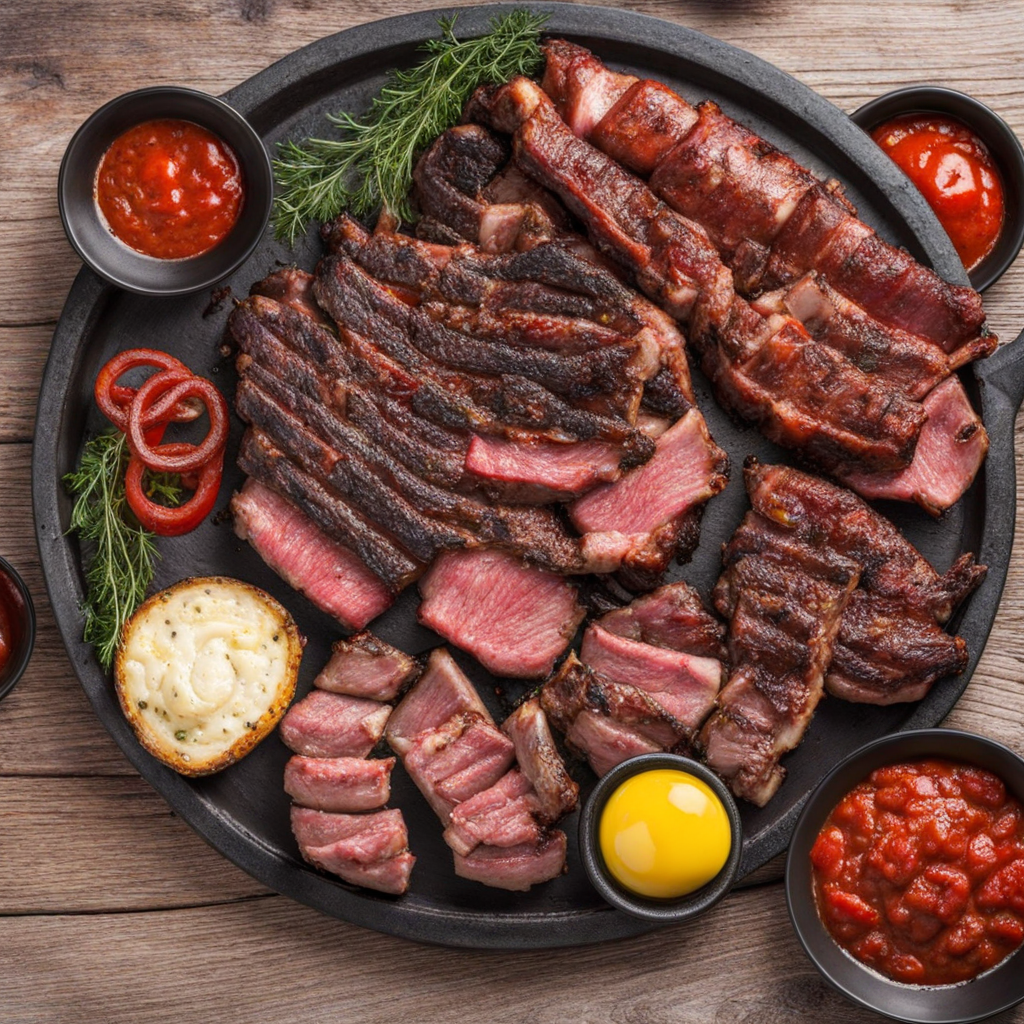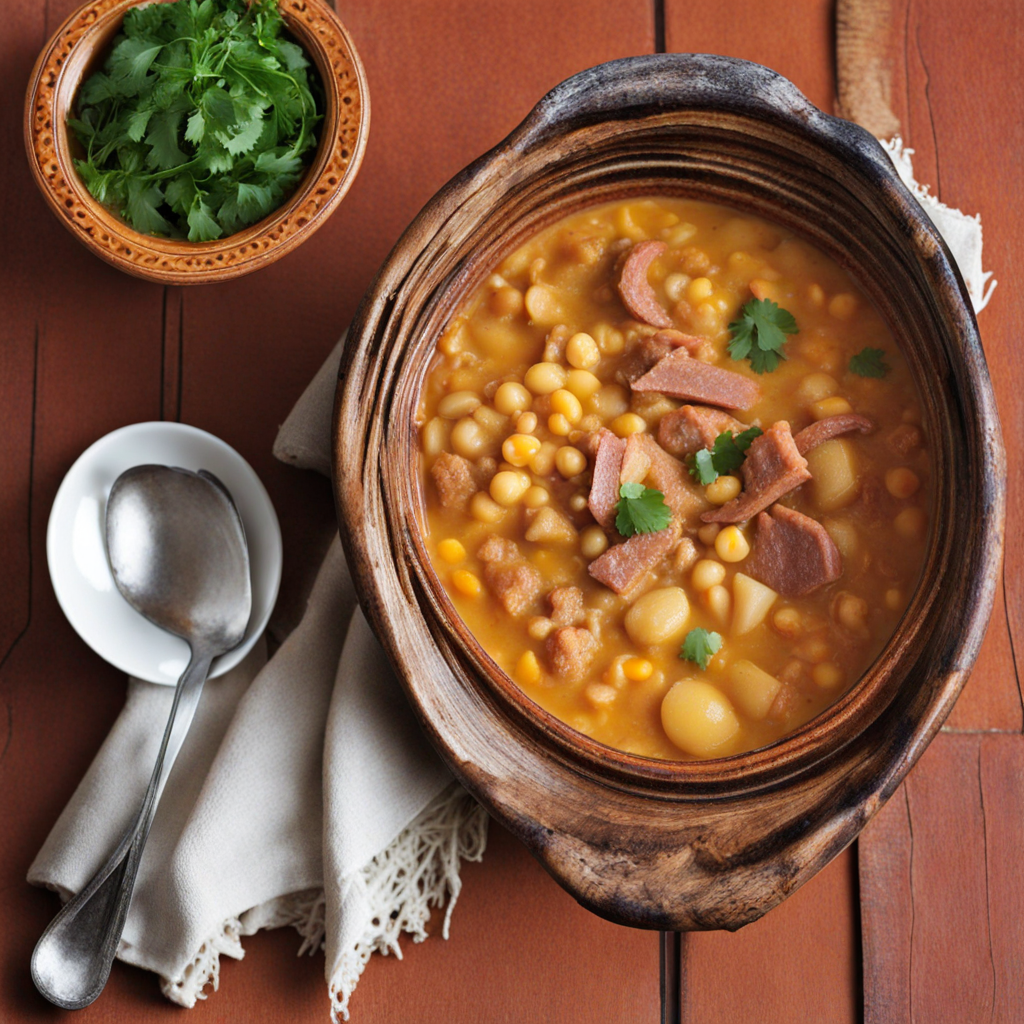Asado
Asado is more than just a meal; it’s a cultural ritual deeply embedded in Argentine life. Traditionally, it consists of various cuts of beef, pork, chicken, and sometimes lamb, all cooked on a grill known as a 'parrilla' or over an open fire. The meat is often seasoned simply with salt, allowing the natural flavors to shine through, but it can also be enhanced with chimichurri—a vibrant sauce made of parsley, garlic, vinegar, and olive oil that adds a fresh, zesty kick to the smoky, succulent meats. The cooking process is slow and leisurely, emphasizing the social aspect of dining, as family and friends gather around the grill to enjoy both the food and each other's company.
How It Became This Dish
Origins of Asado Asado is more than just a method of cooking; it is a deeply ingrained cultural tradition in Argentina, with roots that can be traced back to the indigenous peoples of the region. The practice of roasting meat over an open fire dates back to the early days of the indigenous inhabitants, who utilized the abundant livestock in the area, particularly the wild cattle known as "guachos." The arrival of the Spanish colonizers in the 16th century introduced new techniques and culinary influences, but the essence of asado remained tied to the land and its resources. The Spanish brought their own livestock, including sheep and pigs, which further diversified the types of meat available for roasting. Asado began to evolve in the Pampas, the vast grasslands of Argentina, where gauchos—nomadic cattle herders—developed the art of cooking meat over an open flame. This method was practical for their lifestyle, as it allowed for communal gatherings and celebrations. The gaucho’s way of life and their affinity for asado became symbols of Argentine identity, embodying the spirit of freedom and connection to the land. \n Cultural Significance Asado holds a place of profound cultural significance in Argentina, transcending mere sustenance to encompass social bonding and national pride. It is a social event that brings together family and friends, fostering connections and creating a sense of community. The preparation of asado is often a communal effort, with roles shared among participants—some gather the firewood, while others season the meat or set the table. This ritualistic aspect of asado strengthens interpersonal bonds, making it an integral part of social gatherings, celebrations, and even holidays. In Argentina, asado is not only about the food but also about the experience. It is customary for the host, known as the "asador," to take pride in their grilling skills, often showcasing their expertise to guests. The process of cooking can take several hours, during which time conversations flow, laughter is shared, and stories are exchanged. The traditional accompaniments, such as chimichurri sauce, salads, and bread, further enhance the experience, creating a symphony of flavors that reflects the country’s diverse culinary landscape. \n Development Over Time Throughout the years, asado has undergone various transformations, reflecting changes in Argentine society and culinary trends. In the early 20th century, as immigration flourished, particularly from Italy and Spain, new influences began to shape the asado tradition. Italian immigrants introduced different cuts of meat and techniques, while Spanish culinary practices diversified the flavor profiles of traditional asado. This fusion of cultures enriched the experience, leading to the widespread popularity of asado across social classes and regions. By the mid-20th century, asado had solidified its status as a national dish, prominently featured in family celebrations, holidays, and major life events. The introduction of the modern parrilla, a type of grill unique to Argentina, further revolutionized the way asado was prepared. These grills allowed for greater control over the cooking process, enabling the asador to achieve the perfect balance of heat and smoke. The parrilla became a symbol of Argentine culinary heritage, often found in backyards, restaurants, and social clubs across the country. \n Modern Asado and Global Influence In contemporary Argentina, asado continues to be a cherished tradition, with new generations embracing and reinventing the practice. The rise of urban culture has led to adaptations of the asado experience, with many city dwellers opting for rooftop barbecues or communal grilling events in parks. Additionally, the global popularity of Argentine cuisine has brought international attention to asado, inspiring chefs and food enthusiasts worldwide to explore its flavors and techniques. Asado has also become a culinary ambassador for Argentina. Argentine restaurants in major cities around the world showcase the art of asado, offering diners a taste of the tradition. Events like the "World BBQ Championship" and various food festivals celebrate asado, allowing chefs to demonstrate their skills while promoting Argentine culinary culture on a global stage. \n Regional Variations Asado is not monolithic; regional variations exist that showcase the diversity of Argentine culture and geography. In northern Argentina, for example, the use of spices and different cooking methods, such as the "asado a la estaca" (meat cooked on a stake), highlights the unique culinary expressions of that area. Meanwhile, in the southern regions, particularly Patagonia, the influence of indigenous Mapuche cooking techniques can be seen, with the integration of local ingredients and flavors. Each province has its own preferred cuts of meat and sides, contributing to a rich tapestry of flavors that define the asado experience across the country. In Mendoza, the wine region, the pairing of asado with local Malbec wines has become a celebrated tradition, while in Buenos Aires, the urban setting encourages a more informal barbecue culture, often accompanied by lively music and dance. \n Conclusion Asado is a quintessential expression of Argentine culture, embodying the values of community, tradition, and the deep connection to the land. From its origins among indigenous peoples and gauchos to its modern adaptations, asado remains an enduring symbol of national identity. It invites people to gather, share stories, and create memories over the simple act of cooking meat, illustrating the power of food to unite communities and celebrate cultural heritage. As asado continues to evolve, it serves as a testament to the dynamic nature of culinary traditions and their ability to adapt while retaining their core significance.
You may like
Discover local flavors from Argentina







